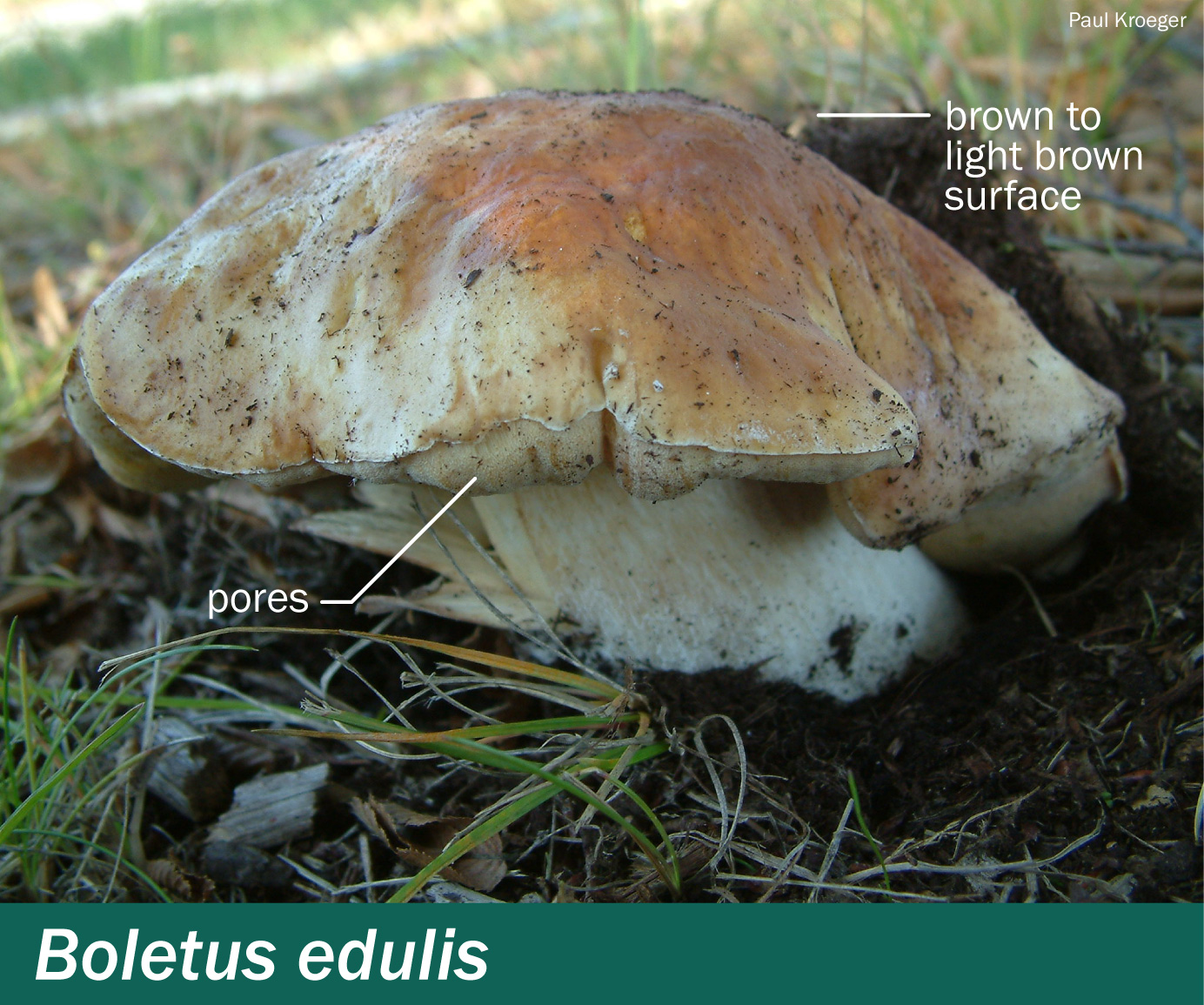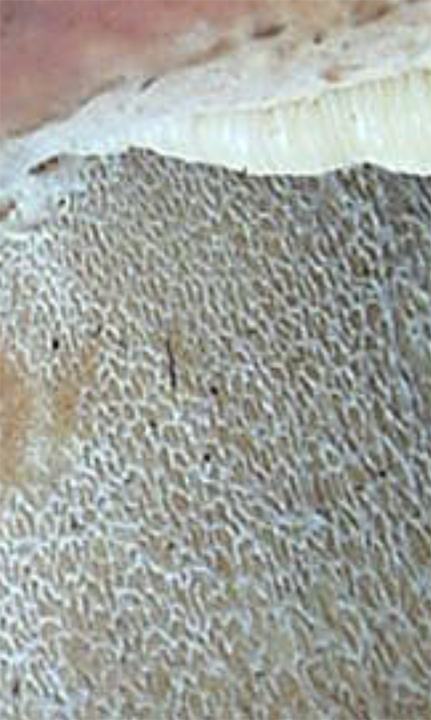Boletus edulis — King bolete, cep, Steinpilz, penny bun
Left image: King bolete3, photograph by Paul Kroeger.
Right image: Net-like 'reticulum' on stem, photograph by Paul Kroeger.
Odour: Mild, pleasantly mushroomy.
Cap: 5–30 cm in diameter. Caps hemispherical when young, expanding with age to become flattened or somewhat wavy around the edges. The colour varies from pale beige to tan to reddish brown. Surface may be dry or wet/slimy if weather is moist. Often partly buried in duff, looking like a bakery bun emerging from leaf litter.
Pores: On the underside of the cap find pores or minute holes (look closely, they are only ~0.3–0.5 mm wide7). Pore surface is white when young and pores are stuffed with whitish cottony tissue; pores open and become yellowish with age. Pore colour does not change to blue or brown after being rubbed (check ~10 min after rubbing).
Stems: (3) 8–25 cm long x 1.5–2.5 cm wide near the cap; up to 12 cm wide at the base, bulbous when young, later more cylindrical, often with a tapering or pointed base. The abruptly bulbous base in the photo above is unusual. Surface white when young, to tan or pinkish coloured in upper half with age. Look closely for the pale, net-like pattern (‘reticulum’, see insert in image above) at the top of the stem. Flesh in cap and stem white and firm.
Ring or veil: None.
Cup: None.
Spores: 13–18 x 4–7 µm, olive brown, without a germ pore.
Habitat: In small groups on the ground, often partly buried under leaf litter. In the Pacific northwest, often in hemlock (Tsuga heterophylla), spruce (Picea sitchensis), pine (Pinus spp.) and fir (Abies spp.) forests1,2 but with oaks (Quercus spp.) and other broad-leaved trees in Europe8.
Geographic distribution: Widely distributed across North America and Europe.
Treatment: Contact your regional Poison Control Centre if you or someone you know is ill after eating boletes. Poison centres provide free, expert medical advice 24 hours a day, seven days a week. If possible, save the mushrooms or some of the leftover food containing the mushrooms to help confirm identification.
Poison Control:
British Columbia: 604-682-5050 or 1-800-567-8911.
United States (WA, OR, ID): 1-800-222-1222.


